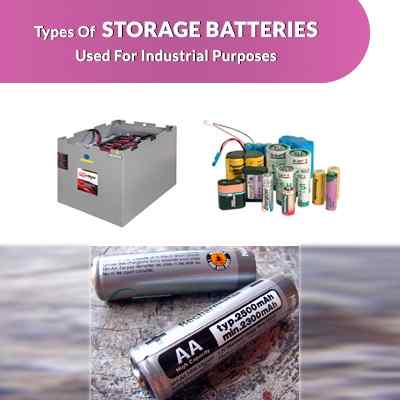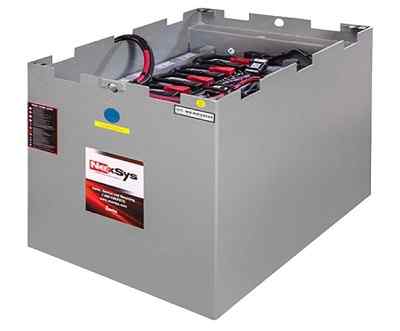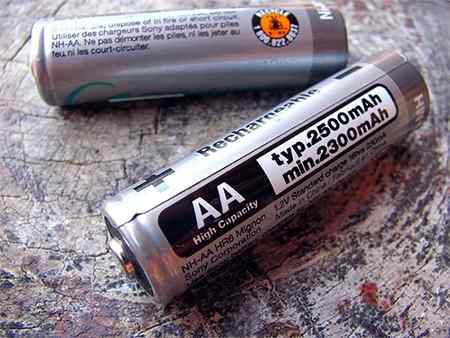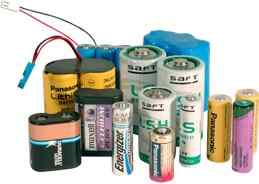Types Of Storage Batteries Used For Industrial Purposes

Within the past years, the commercial field of storage batteries has increased by leaps and bounds. The storage battery manufacturers, a short time ago, almost confined themselves to making large stand-by batteries for power systems and street-car services. The manufacturing of small storage-battery power units has become the mainstay of the battery business. Storage batteries are a cell or connected group of cells, that converts chemical energy into electrical energy by reversible chemical reactions. They may be recharged by passing a current through it in the opposite direction to that of its discharge. They work in contrast to the primary cells, which are discharged once and discarded. Unlike primary, storage batteries can be supplied with direct current of the correct polarity and recharged to or near their original energy content. Storage batteries can repeatedly store electrical energy. With storage batteries, energy is stored and released by transporting ions back and forth between electrodes, and therefore can be charged. These batteries, in industrial situations, can be used in combination with solar power generation systems or wind to distribute output evenly throughout a period of time. Other uses of these storage batteries include providing a stable electricity supply to be used by factories, buildings, commercial facilities and households. The different types of storage batteries used for industrial purposes are -
- Lead-acid batteries
- Alkaline storage batteries
- Lithium storage batteries
| Also Read: Empowering Automation: The Role of Storage Batteries in Industrial Efficiency |
A) Lead-Acid Batteries
 Lead-acid batteries are the type of industrial batteries that has long been the most widely used rechargeable portable power source. We can say, the lead-acid battery system has been successful because of the following features :
Lead-acid batteries are the type of industrial batteries that has long been the most widely used rechargeable portable power source. We can say, the lead-acid battery system has been successful because of the following features :
- Good life cycle with high reliability for hundreds of cycles, especially with good recharge control
- Comparatively good shelf life for a rechargeable system when stored
- A high degree of salvagebility at low melting temperatures
- Wide capability range for low or high current demand over unusual ambient temperatures
- Relatively low cost
- Ease of fabricating lead components by welding, rolling or casting
- The high cell voltage should be at 2.1 volts per cell
The lead-acid storage batteries are most economical for larger power applications, where weight is of minor concern. These type of storage batteries are preferred choice for wheelchairs, hospital equipment, emergency lighting and UPS systems, factories and telephone exchanges, to power emergency lights.
Advantages :
- Inexpensive and simple to manufacture
- Low self-discharge
- Capable of high discharge rates
- Low maintenance requirements
- Reliable, mature and well-understood technology
Limitations :
- Low energy density
- Cannot be stored in a discharged condition
- Environmentally unfriendly
- With improper charging, thermal runaway can occur
- Restrictions of transportation on flooded lead acid
- Only a limited number of full discharge cycles are allowed
Market insights for lead-acid batteries :
According to Global Info Research study, over the next five years, the worldwide market for Industrial Lead Acid Battery is expected to grow at a CAGR of roughly 3.7%, and will reach 13500 million USD in 2023, from 10900 million US$ in 2017.
| Also Read: Primary Batteries - Dry & Wet Applications in Industrial Manufacturing |
B) Alkaline Storage Batteries

These are one type of industrial batteries where the electric energy is derived from the chemical action in an alkaline solution. A variety of electrode materials are featured in such type of storage batteries. Some of them are :
- Nickel (hydroxide)–cadmium systems - These are the most common small rechargeable battery type for portable appliances. They are heavy and have comparatively limited energy density. The larger nickel-cadmium batteries are used in emergency power systems and for starting aircraft engines. Additionally, they have also found applications in other backup power systems, where low temperature conditions, very high currents and high reliability are special factors.
- Nickel (hydroxide)–zinc batteries - These storage batteries are attractive from a development point of view. Systems of this kind may become a viable substitute for lead-acid traction batteries or nickel-cadmium batteries, if their life cycle can be significantly improved.
- Nickel (hydroxide)–iron batteries - Although they have been extensively used in the European mining industry, iron batteries do not recharge with high efficiency, consuming more electricity, generating heat, than is generally desirable.
- Nickel (hydroxide)–hydrogen cells - The hydrogen in these cells can serve as an active anode material. In many applications, the nickel-cadmium batteries are being replaced by nickel-metal hydride batteries, because of their absence of toxic cadmium, higher capacity per unit volume, greater tolerance of abuse. In most electric and hybrid-electric vehicles, the nickel-metal hydride batteries are generally used.
- Alkaline zinc–manganese dioxide rechargeable cells - These are sold commercially as an alternate with other systems, where moderate amounts of electricity are needed. The high energy density and low cost of these cells encourage commercial introduction and further engineering work.
- Silver (oxide)–zinc batteries - Even though expensive, they are employed where good cycling efficiency, low weight, high power density, and low volume are significant. They have become vital in special vehicles for submarine exploration and underwater tests. Apart from these, they are also employed in communications equipment, portable radar units, as well as in space vehicles and aircraft.
Advantages :
- Higher energy density
- Rechargeable variant is four times the capacity of nickel cadmium or nickel metal hydride batteries
- Longevity
- Functions even at very low temperatures
- Susceptibility to leakage is also low
- Lesser environmental impact
- Does not require any special disposal methods and do not pose serious health issues except from mild irritations
Limitations :
- Alkaline battery is heavier and bulkier
- High internal resistance
- When the battery is left in devices for too long, it can leak and leaked materials can corrode circuits
Market Insights for alkaline storage batteries:
As per recent market research report titled, " Alkaline Battery Market 2018: Market Size, Market Volume, Trends, Opportunity, Forecast 2018-2024, it says - In 2018, the global alkaline battery market accounted for USD 5,976.1 Million, and by 2024 is estimated to reach 6,772.4 Million. Moreover, it is anticipated to grow at a CAGR of 2.0%, during 2019-2024".
C) Lithium Storage Batteries

With theoretical energy densities that range from 600-2000 watt-hours per kilogram, the rechargeable lithium-metal anode batteries show commercial promise. Lithium-nickel oxide, lithium-molybdenum disulfide, lithium–cobalt oxide, and lithium-manganese dioxide are some of the commercially available systems of this type. The development of lithium-ion cells, was responsible for the major commercial success of rechargeable lithium-based batteries. These batteries are now available for cellular telephones, portable computers, and other devices.
Advantages :
- Relatively low self-discharge
- Low maintenance
- High energy density
- Does not require prolonged priming when new.
Limitations :
- Transportation restrictions
- Not fully mature
- Expensive to manufacture
- Even when not in use, they are subjected to aging
- To maintain current and voltage within safe limits, it requires protection circuit
| Also Read: Top 7 Lithium-Ion Storage Battery Systems for Renewable Energy |
Market Insights for lithium storage batteries :
As per industry research in the latest study, the global lithium-ion battery market is estimated to witness a CAGR of 15.33% to reach USD 80.392 billion in 2024, from USD 34.163 billion in 2018.











